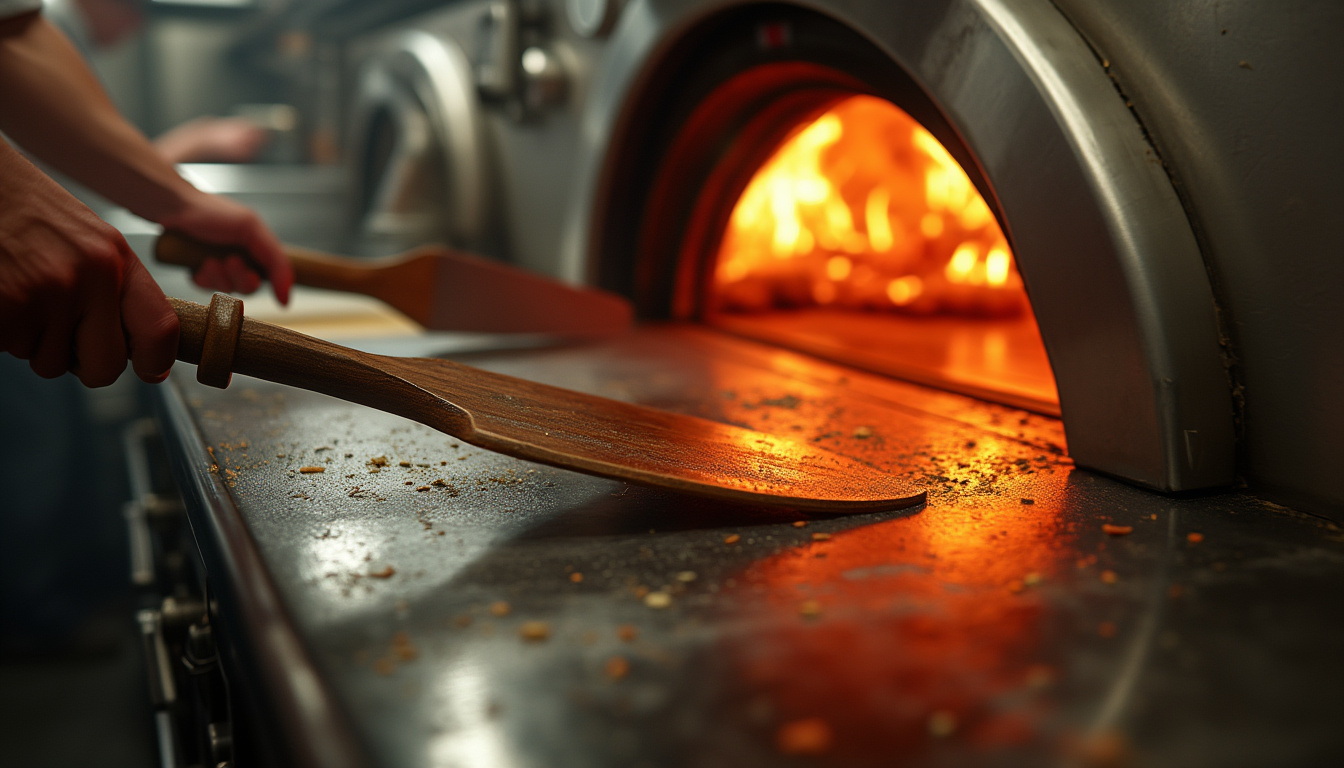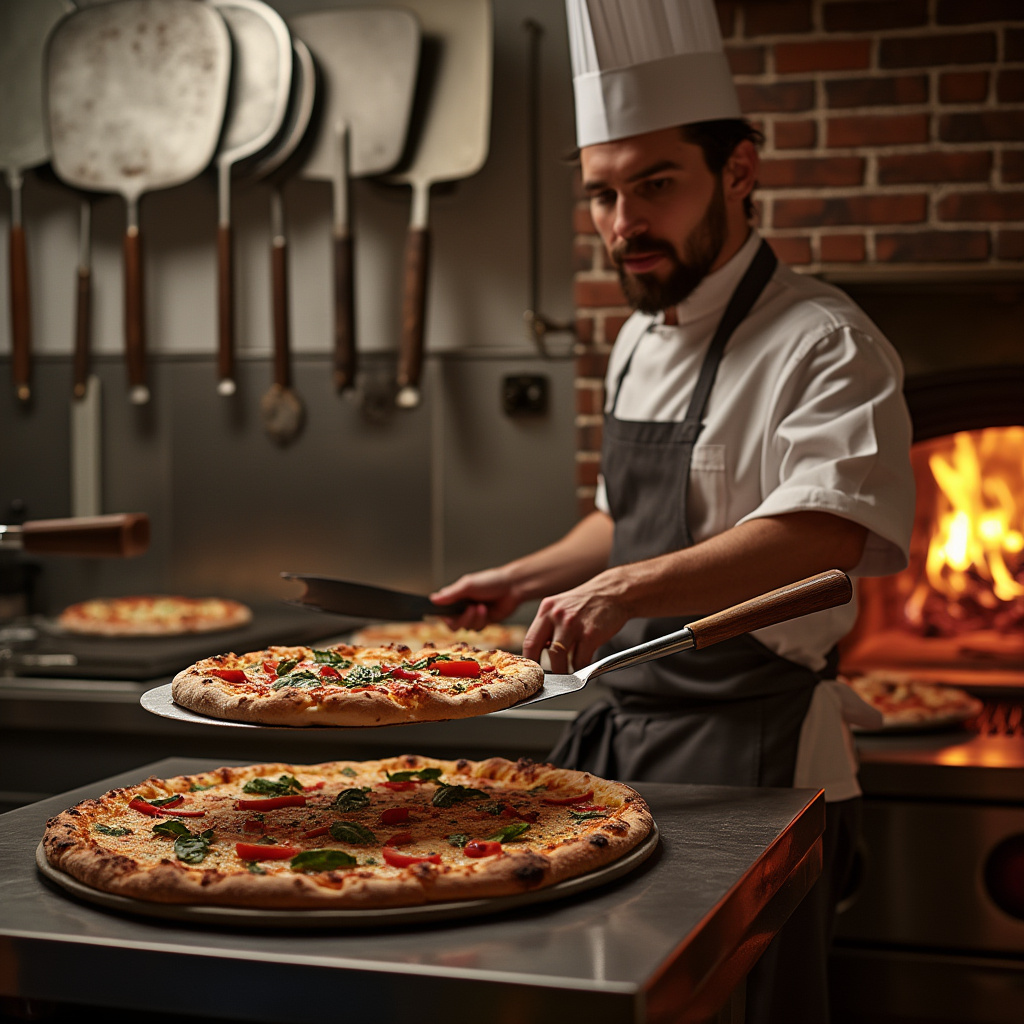Choosing the Right Pizza Peels and Paddles for Your Commercial Kitchen
In the fast-paced environment of a commercial kitchen, having the right tools is crucial for efficiency and safety. Pizza peels and paddles are indispensable for any establishment that serves pizza, but many operators are unclear about the differences between these two essential tools.
While the terms “pizza peel” and “pizza paddle” are often used interchangeably, they serve distinct purposes. Understanding their unique roles and features can help you make informed decisions for your kitchen.
Pizza Peels vs. Paddles
A pizza peel is primarily designed for transferring pizzas in and out of hot ovens. Its long handle and flat blade make it ideal for sliding under cooked pizzas, especially in high-temperature environments. On the other hand, a pizza paddle is typically used for prepping and placing raw pizzas into the oven. Some paddles also double as serving tools, adding versatility to their function.
Both tools are vital, but their designs cater to different stages of the pizza-making process. Choosing the right one depends on your kitchen’s specific needs and workflow.
Key Factors to Consider
When selecting pizza peels and paddles, there are several factors to evaluate to ensure they meet your kitchen’s requirements. Blade size and style, handle length and shape, and material are among the most important considerations.
Blades vary in size, typically ranging from 9 to 18 inches in length and 7 to 16 inches in width. Round blades are excellent for turning pizzas in the oven, while rectangular blades are better suited for removing pizzas. Perforated blades, meanwhile, allow excess flour to fall through, reducing the risk of a messy oven.
Handle length and shape also play a significant role. Longer handles are ideal for high-volume kitchens with large ovens, while shorter handles may suffice for smaller operations. Round handles are generally more comfortable, and wood or particle board handles stay cooler, reducing heat transfer during use.
Material options include wood, metal, and particle board or composite materials. Wood is a popular choice for paddles, as it is naturally non-stick when seasoned. Metal peels are durable and thin, making them a practical option for busy kitchens. Particle board and composite materials are heat-resistant and dishwasher-safe, adding convenience for commercial use.
By considering these factors, you can select tools that align with your kitchen’s unique demands, ensuring efficiency and safety in your operations.
Choosing the Right Option
Selecting the appropriate pizza peels and paddles for your commercial kitchen involves a thorough assessment of your specific needs. Consider the type of oven you use, the size of pizzas you serve, and any local health and safety regulations that may apply. These factors will guide you in determining the most suitable tools for your operations.
Many commercial kitchens find it beneficial to have an assortment of peels and paddles on hand. This allows staff to adapt to different situations, whether it’s handling large batches of pizzas in a high-volume setting or managing smaller, more delicate pies in a boutique restaurant. Having the right tool for each task ensures smoother workflow and reduces the risk of accidents.
The Role of Quality and Expertise
The SignatureWares line stands out as a premium choice for pizza accessories, offering a range of high-quality tools designed for commercial kitchens. Their pizza peels feature durable aluminum blades paired with comfortable wood handles, making them ideal for frequent use in demanding environments. Additionally, their paddles are equipped with helpful sizing guides, which can be invaluable for maintaining consistency in pizza preparation.
Investing in superior-quality tools not only enhances efficiency but also contributes to a safer working environment. Durable materials and ergonomic designs reduce the likelihood of equipment failure and operator fatigue, allowing your team to focus on delivering exceptional dishes to your customers.
For kitchens aiming to optimize their pizza-handling processes, consulting with an equipment expert can provide personalized recommendations tailored to specific needs. Experts can offer insights into the latest industry trends, material innovations, and ergonomic designs, ensuring that your kitchen is equipped with the best tools available. By leveraging their expertise, you can make informed decisions that elevate your kitchen’s performance and productivity.

Conclusion
Selecting the right pizza peels and paddles is a critical decision for any commercial kitchen, directly impacting efficiency, safety, and the quality of your pizza offerings. By understanding the distinct roles of peels and paddles, evaluating factors such as blade size, handle length, and material, and investing in high-quality tools, you can optimize your kitchen’s workflow and performance.
Whether you’re operating a high-volume restaurant or a boutique pizzeria, having the appropriate tools for each stage of pizza preparation and cooking ensures consistency, reduces risks, and enhances your team’s productivity. Prioritizing durability, ergonomics, and functionality will not only elevate your kitchen’s operations but also contribute to delivering exceptional dining experiences for your customers.
Frequently Asked Questions
- What is the difference between a pizza peel and a pizza paddle?
A pizza peel is designed for transferring pizzas in and out of the oven, while a pizza paddle is typically used for prepping and placing raw pizzas into the oven. Some paddles also serve as serving tools. - How do I choose the right size of pizza peel or paddle?
Consider the size of your oven and the pizzas you serve. Blades typically range from 9 to 18 inches in length and 7 to 16 inches in width, so choose a size that accommodates your needs. - What materials are best for pizza peels and paddles?
Wood is popular for paddles due to its non-stick properties when seasoned. Metal peels are durable and thin, while particle board and composite materials are heat-resistant and dishwasher-safe. - Can pizza peels and paddles go in the dishwasher?
Some materials, like particle board and composite options, are dishwasher-safe. However, wood peels and paddles should be hand-washed to maintain their seasoning and durability. - Why is quality important when selecting pizza peels and paddles?
High-quality tools are more durable, reduce the risk of equipment failure, and provide ergonomic benefits, allowing your team to work more efficiently and safely.

Leave a Reply